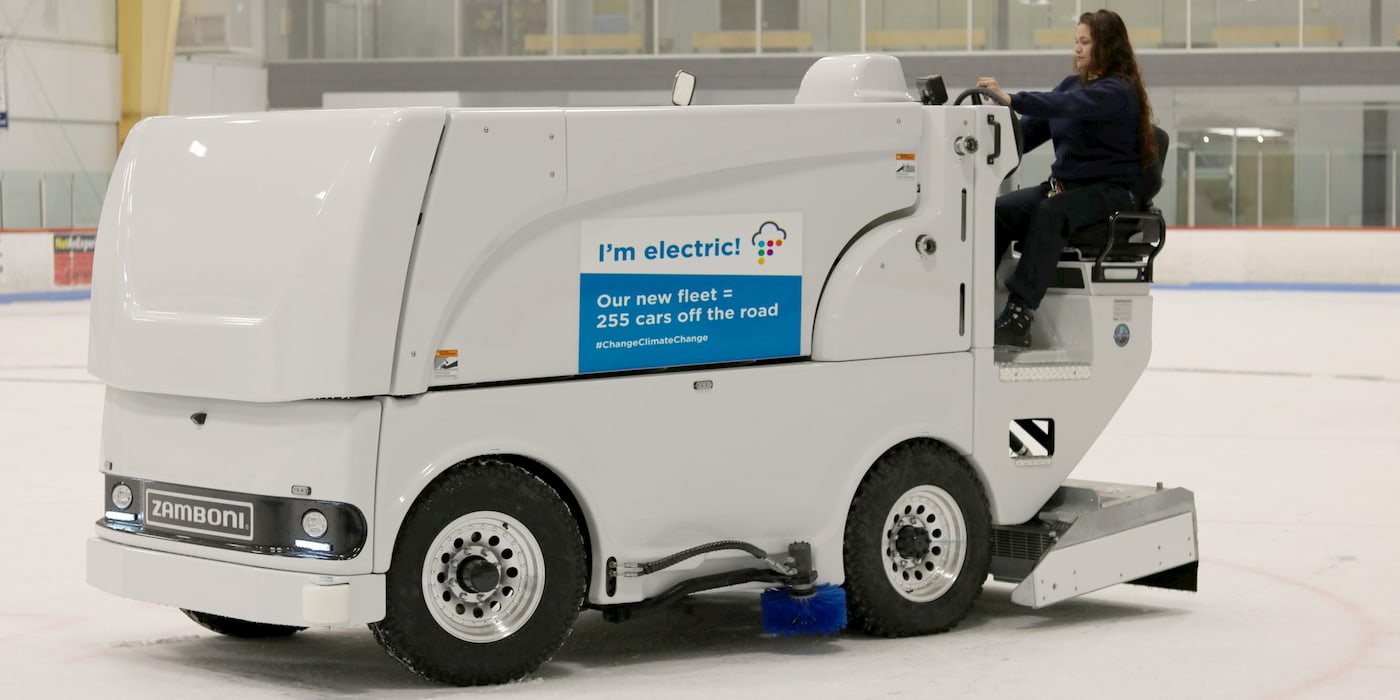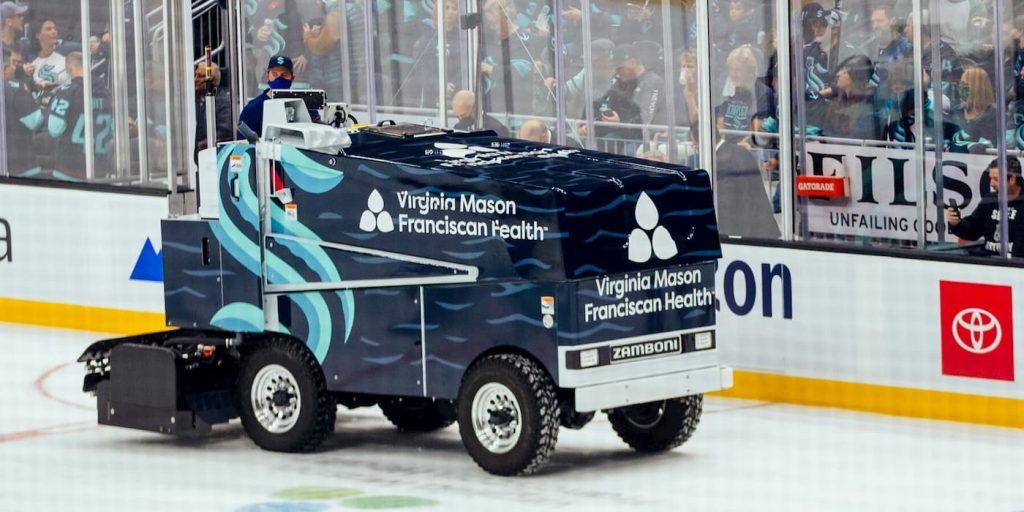
Electric vehicles are better for the climate and your health, with zero tailpipe emissions. Electric Zambonis are a perfect example since they often operate in an enclosed environment.
Those ice resurfacers (or Zambonis as they are often referred to in tribute to American inventor and engineer Frank Zamboni) you enjoy watching clean the ice between Hockey periods can be damaging not only to just the players’ health but also spectators’.
Even with new zero-emission electric technology and research to prove its benefits, most Zambonis still run on natural gas, gasoline, diesel, or propane.
Burning those types of fuels indoors, where most hockey is played, can generate air pollutants like carbon monoxide and nitrogen dioxide. In fact, there have been several cases where entire hockey rinks of people have been forced to evacuate due to toxic levels of air pollutants.
For example, parents and students were evacuated from a hockey game in Tupper Lake, New York, after the Tupper Lake Volunteer Fire Department Chief Royce Cole determined carbon monoxide levels were at 50 parts per million (ppm).
According to the current Occupational Safety and Health Administration (OSHA), the permissible limit for carbon monoxide is 50 ppm within eight hours.
The culprit was later determined to be a 1972 Zamboni, scheduled for replacement. Several people were sent to the emergency room, and at least one of the kids required oxygen due to the carbon monoxide exposure.
This is just one example. As CBC News Canada points out, it’s happening all too often, leading Health Canada to step in.

Electric Zambonis save the climate and your health
Health Canada released the best practices for improving air quality in ice arenas after finding, “in recent years, there have been numerous reported incidents of poisoning in Canadian arenas, frequently occurring during periods of ice resurfacing.”
The agency says documented cases of CO poisonings from resurfaced emissions in arenas have reported levels of 40 to 170 ppm (it recommends a short-term exposure limit of 25 ppm).
And the worst part is the pollutants aren’t fully cleared overnight by the ventilation system, meaning they can build up over time with more use.
To overcome this, Health Canada claims in the report:
Electric-powered equipment is the best option for eliminating CO and NO2 emissions in ice arenas. Arenas using electric resurfacers have been shown to have CO and NO2 levels similar to concurrent levels outside the arena, consistently below 1.0 ppm and 0.02 ppm.
Although electric Zambonis can cost more upfront (around $50,000 more), the additional expenses are recouped through fuel and maintenance savings.
Although researchers have tried various strategies to remove the pollution, including upgraded ventilation, zero-emission electric Zambonis were the only extremely effective solution.
Electrek’s Take
The electric Zamboni is a prime example of what’s happening outside the rink. Toxic emissions are being emitted consistently every day, and although you can’t see it, you are likely breathing it in.
Despite hockey rinks being inside with poor ventilation, the same idea applies. Burning fossil fuels adds carbon dioxide, nitrous oxide, methane, and other greenhouse gases that get trapped in the atmosphere, causing temperatures to rise and other producing other harmful effects to the planet and your health.
Research from the National Oceanic and Atmospheric Administration shows greenhouse gases caused by human activities trapped 49% more heat in the atmosphere in 2021 than in 1990.
The best way to reverse these effects is by using zero-emission battery electric vehicle technology. As the Zamboni EV example shows, electric-powered equipment is best for reducing emissions.
You may think twice the next time you go to watch a hockey game. Just make sure the Zamobini is an electric one.
Several professional hockey teams, like the Seattle Kraken and Arizona Coyotes, have revealed all-electric ice resurfacers.
FTC: We use income earning auto affiliate links. More.




Comments